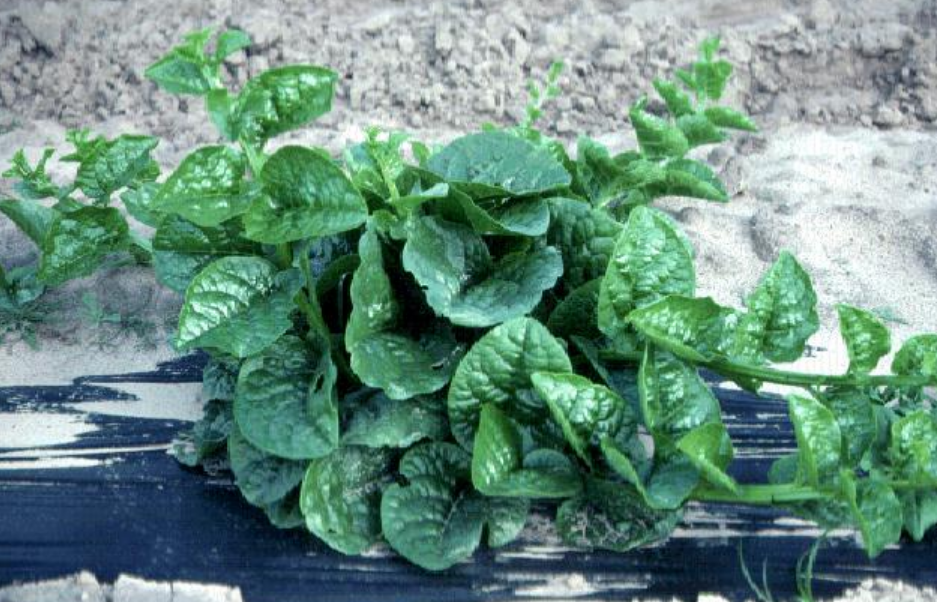
by Evan Anderson | Jun 23, 2022
Unlike areas with cooler climates, North Florida’s weather is a bit of a rollercoaster. Where the traditional four seasons allow for one growing season, the panhandle’s temperature changes create two growing seasons – spring and fall. During the winter, temperatures fall too low to keep plants happy, so those who expect to grow tropical plants in Florida may be disappointed. During the summer, the heat and humidity climb to levels that even plants can find stressful! Many of our vegetable crops simply can’t handle the extremes and wither away.
There are a few edible plants we can grow, however, that don’t seem to mind the hot weather. If you simply can’t live without a productive garden during the summer, you might consider trying these:
Cowpeas
Also called Southern peas, black-eyed peas, or field peas, these are known for their ability to produce a crop despite the harshest of conditions. Actually a bean rather than a pea, they take 65 to 125 days to grow to full maturity, depending on variety. Because they are a nitogen-fixing legume, they have also been used as a cover crop.
Malabar Spinach
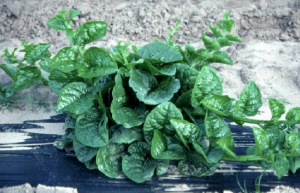
Malabar Spinach. Photo Credit: James M. Stephens, UF/IFAS
Popular in Asian countries, Malabar spinach is actually a vining plant unrelated to true spinach. It grows quickly and is edible both raw and cooked, though some people may not appreciate its mucilaginous texture. Similar to okra’s sliminess, this quality does make it useful for thickening soups. Malabar spinach may be propagated from seed or by cuttings, which root easily. The plant also produces berries which, while not toxic, have very little flavor and tend to stain whatever they touch.
Okra
A traditional Southern favorite, okra takes the heat and keeps producing. Related to cotton and hibiscus, it grows pods that are ready to harvest after 60-70 days. Seeds have a tough exterior and need to be soaked overnight before planting. Harvest every couple of days at least for best results, as pods that grow too large become tough and fibrous.
Seminole Pumpkin
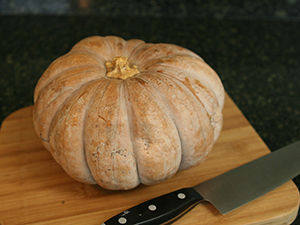
A Seminole pumpkin. Photo credit: UF/IFAS
Though they may need extra attention paid to them due to their attractiveness to pests, Seminole pumpkins are a great option for a summer planting. Similar to butternut squash, these cucurbits aren’t your traditional carving pumpkin, but they make great eating. Give them plenty of room to spread out in a sunny space. They take 120 days after planting before they’re ready to harvest, and their thick skin allows them to be stored for a long time after.
Sweet Potato
Does well in sandy soil? Check. Doesn’t mind the heat? Check. Sweet potatoes are great for our neck of the woods. Start out with disease-free slips for best results, and pick varieties such as ‘Beauregard’ that do well in our area.
Yardlong Beans
Related to cowpeas, yardlong beans grow on a climbing vine. The beans themselves, as the name suggests, are contained in a pod that can reach 36 inches in length. These can be picked and cooked much like green beans while the pods are still tender.
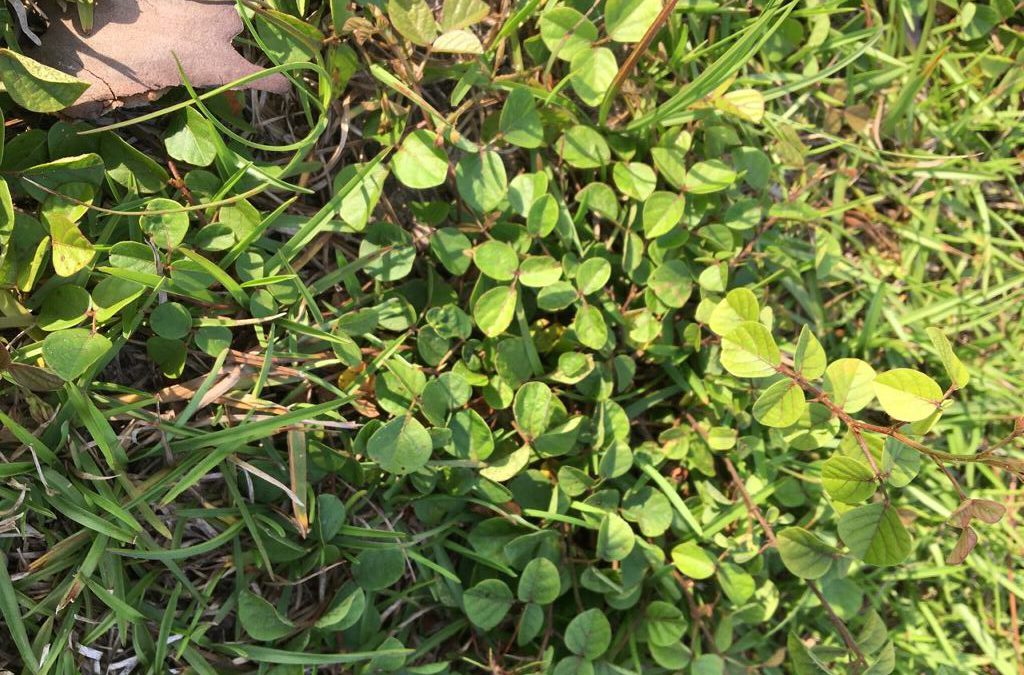
by Ashley Stonecipher | Jun 21, 2022
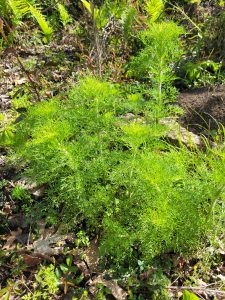 Summer weeds are here. What should we do? As we are officially into summer you are probably noticing many of those summer weeds poking through your lawn by now, or perhaps they have taken over completely. Do not give up, there is still hope for a beautiful lawn with less weeds.
Summer weeds are here. What should we do? As we are officially into summer you are probably noticing many of those summer weeds poking through your lawn by now, or perhaps they have taken over completely. Do not give up, there is still hope for a beautiful lawn with less weeds.
The first thing is to be able to identify the weed and identify the type of grass. Now you may be thinking that is impossible and maybe you are thinking why it is important to identify those? The answer to that question is simply that not all chemicals are the same and understanding what you have and the best time of year to spray for that will save you both time and money. Weeds fall into three categories: Broadleaf, Grass, and Sedge. Remember, a weed could be any plant that is out of place. Weeds will compete with desirable plants for nutrients, water, light, and space.
Once you understand what category your weed falls into the next step is to know the life cycle. For example, winter annuals will die out naturally as the temperatures increase and a chemical may not be needed. There are weeds that complete their cycle in one year (winter and summer weeds) and there are weeds that complete their cycle in two years (biennials). A biennial has vegetative growth the first year and will flower and die the second year, examples are Carolina false dandelion, Oldfield toadflax, and cudweed.
Next you will want to identify the indicator species. What does this mean? It means that there are some weeds that grow well in compacted soils like goosegrass and annual bluegrass. Others like it very wet (poor drainage) such as dollar weed, sedges and torpedo grass. While there are weeds such as sandbur and rustweed that like it very dry and sandy. Knowing this can help you do preventative weed control. Grow a healthy turf starting with the right selection, proper cultural practices, pest control, traffic control, and sanitation.
When you are faced with the decision to use chemicals to combat your lawn weeds there are a few things to know. There are selective herbicides that control certain species without hurting others (your lawn) and there are nonselective herbicides that control green plants regardless of species. Also, there are contact herbicides, which are exactly how their name implies. They affect only the portion of the plant that the herbicide touches. There are also systemic herbicides which are translocated through plant’s vascular system.
The best time to spray herbicides is when the weeds are actively growing, young and not drought stressed or producing seed heads. A table below shows the active ingredients best for the three categories of weeds.
|
Broadleaf Weeds |
Grassy Weeds |
Sedge Weeds |
| Centipede |
2-4D + Dicamba +MCPP Thiencarbazone+iodosulfuron + dicamba |
Sethoxydim |
Halosulfuron-methy, Sulfentrazone, Imazaquin, Bentazon, |
| Bermuda |
2-4D + Dicamba +MCPP Thiencarbazone+iodosulfuron + dicamba |
Quinclorac |
Halosulfuron-methy, Sulfentrazone, Imazaquin, Bentazon, |
| Zoysia |
2-4D + Dicamba +MCPP Thiencarbazone+iodosulfuron + dicamba |
Fluazifop, Quinclorac |
Halosulfuron-methy, Sulfentrazone, Imazaquin, Bentazon, |
| St. Augustine |
2-4D + Dicamba +MCPP Thiencarbazone+iodosulfuron + dicamba |
None |
Halosulfuron-methy, Sulfentrazone, Imazaquin, Bentazon, |
|
**temperature restrictions |
|
|
The key is to identify the type of turf you have and the type of weeds you have in the lawn. Further, look into if there are any factors that can be adjusted that might be causing the excess of weeds. And lastly, make sure you are using the right method, chemical, and timing for control. For more information on summer weeds and lawns, please contact your local county extension office.
Information for this article can be found Managing Weeds in Warm Season Lawns | Home & Garden Information Center (clemson.edu)
by Sheila Dunning | Jun 14, 2022
Florida is rapidly urbanizing with 1,000 people a day moving into the state. Many cities in the panhandle have experienced accelerated growth rates over the past ten years. Crestview is one of the seven areas in the state with a population growth of 19% or greater, and the only one located in the panhandle. The 2030 predictions for Florida are another 6 million people, with counties containing military personnel increasing the quickest.
All of these people need water to meet their daily living needs. The average person in the United States uses 101.5 gallons of water per day. Residential water use comprises 61% of the public supply category. This category is responsible for the largest single portion (43%) of groundwater withdrawal in Florida. The Floridan aquifer spans an area of about 100,000 square miles in the southeastern United States, including all of Florida, as well as, portions of three other states. At the current statewide population growth rate, Florida is facing a 300 million gallon per day shortfall of future water needs, possibly as early as 2030.
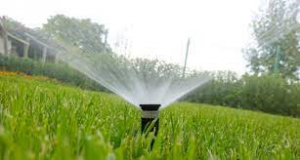 Turfgrass is a key landscape component and often the most commonly used single type of plant in the residential landscape. However, on a hot, sunny day in midsummer, the average lawn uses 125 gallons of water per 1,000 square feet. Although Florida has a humid climate where the precipitation rate, on average, is greater than the evapotranspiration rate, the low water-holding capacity of the soil makes irrigation necessary for the high quality landscapes desired by homeowners. But, watering the yard requires an entire household to skip a shower, not wash anything and avoid cleaning. Or, we need to find ways to use a different source of water for irrigation and conserve the potable water for the people.
Turfgrass is a key landscape component and often the most commonly used single type of plant in the residential landscape. However, on a hot, sunny day in midsummer, the average lawn uses 125 gallons of water per 1,000 square feet. Although Florida has a humid climate where the precipitation rate, on average, is greater than the evapotranspiration rate, the low water-holding capacity of the soil makes irrigation necessary for the high quality landscapes desired by homeowners. But, watering the yard requires an entire household to skip a shower, not wash anything and avoid cleaning. Or, we need to find ways to use a different source of water for irrigation and conserve the potable water for the people.
While the use of reclaimed water for landscape plants has become a standard in many parts of Florida, it has limited availability in the panhandle. However, there are many ways to reduce and conserve potable water use for those with in-ground irrigation systems. First, make sure you have a functional rain shut-off device. By design it will prevent the system from running when it has recently rained. On average, the panhandle has received rain about every 4 days this year. Besides, Florida law requires a rain shut-off device for all irrigation systems, new or old.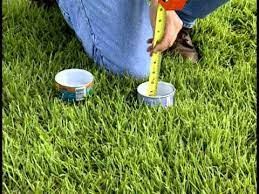
Then, calibrate each zone to determine the length of time required to deliver ½ inch of water. This can be determined by placing 10 or more, short, straight-sided containers throughout the irrigation zone. Run the system and look at each container, measuring the depth with a ruler. Adjust the run time so the system only delivers ½ inch. Now set the clock to run 2-3 times a week for that length of time. It’s that simple. And the water savings is significant. For these and many other irrigation tips, visit askIFAS at https://edis.ifas.ufl.edu/.
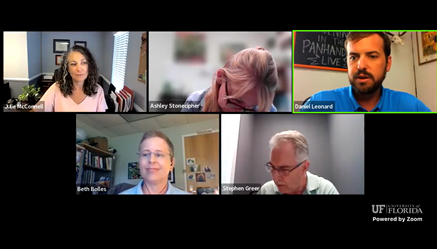
by Matthew Orwat | Jun 14, 2022

The Q&A on Native Pollinators and their Favorite Flowers offered valuable information on many types of flowers that feed our many species of pollinators in Northwest FL. Below are the reference materials related to specific questions that were asked along with notes from the panel discussions.
- Stephen Greer was asked which garden perennials are best for pollinators, he mentioned that Blanketflower, Cardinal Flower, Black Eyed Susan were his top three.
- Julie McConnell was asked, what are some shrubs to benefit birds and pollinators? She stated that insects forage off lawn grasses, but good shrubs are Wax Myrtle, Saw Palmetto, American Beautyberry, Vibernum and Holly Species. Sandy Soil Pollinators: Firebush, Holly, Saw Palmetto, all drought tolerant and good for pollinators.
- Julie McConnell was asked about Fall Pollinator Plants, replying Swamp Sunflower as her favorite.
- What about Winter Pollinator Plants?
- Winter: Mahonia, Fatsia, both good plants for pollinators in shady areas, also Beth added that winter vegetables help pollinators in the winter, such as carrot, wild radish, provide forage for bees, bumblebees and plasterer bees, carpenter bees. Matt Lollar said daikon radish is another good pollinator plant for fall and winter.
- Question from Facebook: Are Loquat trees good for pollinators. How large do they get and when do they bloom? Do they need shade or full sun?
- Are Spicebushes good Pollinator Plants?
- Herbs: Perfect Plants for Pollinators
- What is best for Butterfly Gardening in Florida?
- What are some Favorite Pollinator Plants?
- Better access to native plants: Florida Native Plant Society
- https://www.fnps.org/
- There are Native Plant Nurseries in Bay and Leon County, you can find them on google.
- Some Master Gardner Volunteer programs sell native plants at their sales!
- Stephen: What methods have been successful to approach HOA’s to approve of Native plants in homeowner’s properties?
- Build consensus about native plants before the meeting.
- Covenants or Bylaws. Covenants are less enforceable, Bylaws have enforcement ability.
- Beth: Do we need to supply water for pollinators? YES!
- Is Carolina Jessamine good for bees?
- Growing Sunflowers from seed:
- How Much Bidens alba is enough?
This episode of Gardening in the Panhandle LIVE! is available to watch at https://www.youtube.com/watch?v=BGl4kGYEEs4.
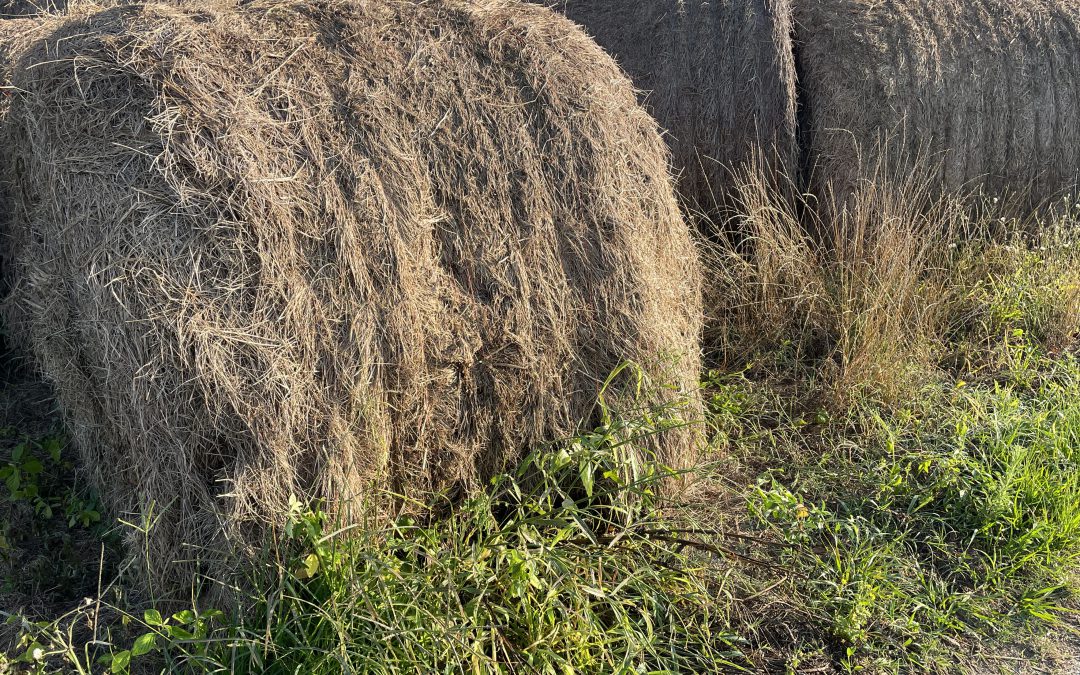
by Matt Lollar | Jun 9, 2022
This article was written by Kacey Aukema, University of Florida/IFAS Extension – Walton County.
I recently met with a home gardener who brought in tomato plants showing strange symptoms on the leaves. Together we puzzled over the odd leaf-curling symptoms that were affecting their tomato beds, but not other areas of the garden. Upon further investigation it was revealed that hay, used as mulch, had recently been spread around the tomatoes, but not in other areas of the garden. It quickly became apparent that the symptoms were likely related to herbicide residual on the hay that was used. The herbicide aminopyralid was the potential culprit. In this case the residual herbicide was not enough to outright kill the growing tomato plants. However, it was interfering with their growth and development and is a cautionary tale reminding us how important careful sourcing of hay used in mulch or compost can be.
What is aminopyralid and how does residual herbicide affect non-target plants through mulch, compost, etc.?
Aminopyralid is a herbicide active ingredient found in several popular pasture products such as GrazonNext™, Milestone™, Chapparral™ and similar products. This and other similar chemicals have residual activity and can be retained in plant tissues, animal manure, and soil, which makes them a very useful for controlling certain troublesome broadleaf weeds in grass pastures for an extended period of time. Unfortunately, this residual activity increases the potential for causing trouble in vegetables or other crops when hay or animal manure from aminopyralid treated pastures is mistakenly used for mulch, compost, etc. In Florida, aminopyralid containing pasture herbicides are often used as the “go to” for control of hard to control weeds like horsenettle and tropical soda apple which are potentially toxic to livestock. Tomatoes, potatoes, and eggplant are in the same genus (Solanum) as those weeds and are therefore very susceptible to this herbicide as are many other vegetable and other broadleaf crops.

Residual aminopyralid damage on a tomato plant. Photo Credit: Kacey Aukema, University of Florida/IFAS Extension – Walton County
How can I know if hay is safe to be used for mulch or compost?
Before acquiring hay to be used as mulch or to compost for vegetable beds, be sure to ask if the hay is free of herbicides with residual activity. Find out what was sprayed on the field in the last two seasons before the hay was harvested. Given that hay destined to be used as mulch or compost is usually old and spoiled, management history of a particular hay bale is likely to be hard to pin down. Do not trust hay to be used for mulch or compost in vegetable beds if prior spray management details are unknown. Also consider that well-stored hay may retain residual herbicide better and for a longer period of time than weathered hay, as the active ingredient is less subject to weathering and biological breakdown.
Those who use broadleaf herbicide products with residual activity such as those containing aminopyralid are subject to follow herbicide label guidelines. For instance, supplemental labeling of GrazonNext HL™ (including FL, AL, and GA) indicates that hay/straw from fields sprayed in the past 18 months should not be used for compost, mulch, or mushroom spawn. When in doubt refer to the label of the particular herbicide product used on hay you purchase for any restrictions and/or reach out to your local county extension agent if you have questions about a specific herbicide product. Relevant use restrictions and considerations like in this example should be conveyed between hay producer and buyer.
Perhaps you already have some hay for mulch/compost with an unclear management history, or you would like to double-check and be sure that it is safe. How could one test it to see if it was safe to use? There is a test called a “bioassay”, conducted by growing susceptible plant seedlings like tomatoes or beans in small pots with the hay/compost/mulch in question incorporated into the potting soil. Then, the test plants can be observed to see if any herbicide symptoms develop to know whether the material is safe to use, before using the hay over a larger area or garden where there would be more risk. For more information on how to conduct a bioassay see: Herbicide Residues, in Manure, Compost, or Hay. Similar in-field bioassays are also recommended when rotating areas out of pasture and into other crops when pasture herbicides with residual activity were used. If susceptible crops like peanuts are grown in areas where such herbicides were used in the recent past they can be damaged, as in this case in an older Panhandle Agriculture Newsletter post.
When used according to label instructions, herbicides with residual activity are very useful for control of broad-leafed weeds in pasture and hay fields and may reduce the spread weeds through seed coming in on purchased hay. However, problems can emerge when hay from fields treated with these products change hands without the use restrictions and considerations being adequately explained. Therefore, caution should be taken by both producer and buyer to avoid damaging sensitive crops when hay or livestock manure are used for mulch or compost.










